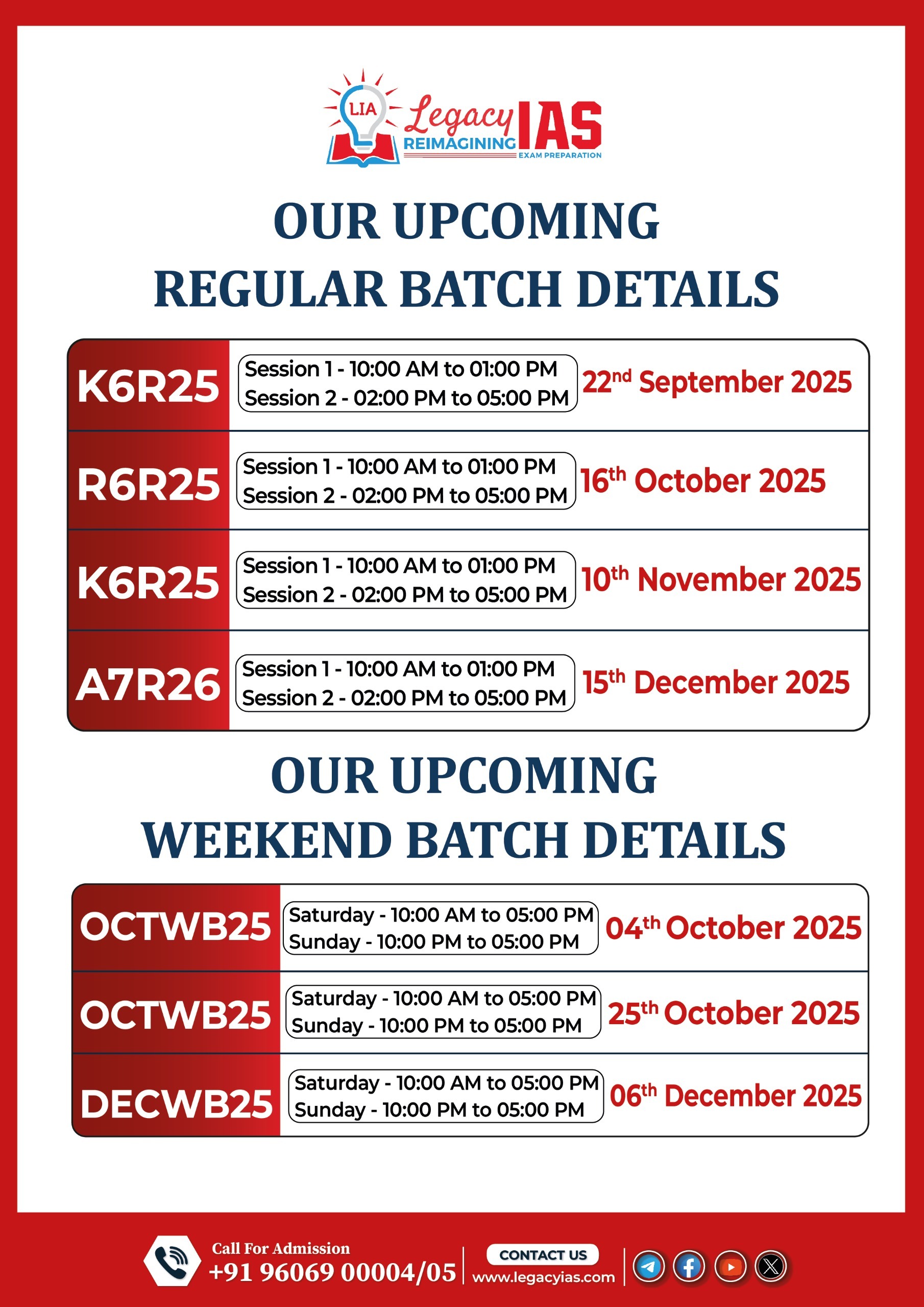Why in News?
- India registered the world’s largest absolute increase in GHG emissions in 2024 — adding 165 MtCO₂e, the highest among all countries.
- India became the 3rd largest global emitter (after China and the U.S.), but its per capita emissions remain < half the global average (3 tCO₂e vs 6.4 tCO₂e).
- Global emissions hit a record 57,700 MtCO₂e in 2024, rising mainly from fossil fuels, methane (CH₄), and land-use changes.
Significance: Highlights India’s development–climate paradox — rapid industrial growth versus equity-based emission responsibility.
Relevance:
GS 3 – Environment & Climate Change
• Global emission trends and India’s emission profile (sector-wise)
• Climate finance, carbon intensity, and sustainable development trade-offs
• Policies: NDCs, National Action Plan on Climate Change (NAPCC), Mission LiFE
• Role of renewables, hydrogen, and EVs in emission reduction
• Carbon markets and India’s net-zero pathway
GS 2 – International Relations
• India’s climate diplomacy in UNFCCC and COP30 context
• Principle of CBDR-RC and Global South negotiations
• Climate justice and equity in international climate regimes
Key Data Snapshot (2024)
| Indicator | Global | India |
| Total GHG emissions | 57,700 MtCO₂e (record high) | ~3,900 MtCO₂e |
| Increase over 2023 | +1,500 MtCO₂e | +165 MtCO₂e (largest globally) |
| Share in global emissions | — | ~6.7% |
| Per capita GHG emissions | 6.4 tCO₂e | 3 tCO₂e (<50% of global avg) |
| Growth rate of per capita emissions (2023–24) | 0.04% | 3.7% |
Sources of GHG Emissions
A. CO₂ (69% of total GHGs)
- Origin: Combustion of coal, oil, natural gas.
- Sectors:
- Power generation (~40%)
- Industry (steel, cement, fertilizers)
- Transport (rapid rise in road and aviation emissions)
- Residential fuel use (LPG, biomass, coal).
B. CH₄ (16% of total)
- Agriculture: Paddy fields, enteric fermentation (livestock).
- Waste: Landfills, sewage.
- Energy: Fugitive emissions during coal mining and gas extraction.
C. N₂O & F-gases (remaining share)
- Fertiliser use and industrial refrigerants (HFCs, SF₆).
India’s Emission Profile – Drivers and Dynamics
- Economic Growth: Energy-intensive industrialisation under Make in India & infrastructure expansion.
- Coal Dependence: ~70% electricity from coal-based plants.
- Urbanisation: Rising transport & construction emissions.
- Agriculture: Methane from rice cultivation and livestock.
- Land-use Change: Deforestation, loss of carbon sinks.
- Energy Inequality: Reliance on biomass and diesel in rural sectors.
Climate Justice Perspective
- Principle of Common But Differentiated Responsibilities (CBDR):
India’s historical share (1850–2019) is only ~4% of cumulative global emissions, far below developed nations. - Equity argument: India’s low per capita and developmental needs justify gradual transition.
- Climate Finance Gaps: $100 billion annual pledge (COP15) remains unfulfilled — hampering developing nations.
India’s National Commitments & Policy Framework
A. NDCs under the Paris Agreement (Updated 2022):
- Reduce emission intensity of GDP by 45% (by 2030) from 2005 levels.
- Achieve 50% cumulative power capacity from non-fossil sources by 2030.
- Create an additional carbon sink of 2.5–3 billion tonnes CO₂e through afforestation.
B. Key Domestic Schemes:
- National Action Plan on Climate Change (NAPCC) – 8 missions (Solar, Energy Efficiency, Green India, etc.).
- Perform, Achieve & Trade (PAT) – industrial energy efficiency.
- Faster Adoption and Manufacturing of Hybrid & Electric Vehicles (FAME).
- National Hydrogen Mission (2021) – Green hydrogen target: 5 MMT by 2030.
- Carbon Credit Trading Scheme (2023).
- Lifestyle for Environment (LiFE) Mission – individual responsibility in emissions reduction.
Implications of Rising Emissions
Environmental:
- Increased frequency of heatwaves, floods, and erratic monsoons.
- Glacial melt and sea-level rise threaten Himalayan and coastal ecosystems.
Economic:
- Higher adaptation and loss-damage costs (≈2–2.5% of GDP by 2050).
- Potential carbon-border tariffs (like EU’s CBAM) hurting exports.
Social:
- Agriculture distress due to changing rainfall and temperature patterns.
- Health risks from air pollution (India already has 7/10 most polluted cities).
Strategic:
- Pressure in international forums (COP30 in Belém) to adopt faster decarbonisation.
Way Forward
A. Energy Transition
- Phase down coal via Just Transition Plans (JTPs) for coal regions.
- Scale up renewables to 500 GW by 2030; accelerate grid storage & green hydrogen.
- Expand nuclear and offshore wind portfolios.
B. Carbon Management
- Develop Carbon Capture, Utilisation & Storage (CCUS) infrastructure.
- Promote bio-CNG, ethanol blending (target 20% by 2025).
C. Agriculture and Methane Mitigation
- Alternate Wetting and Drying (AWD) for paddy to cut CH₄.
- Bio-digesters and feed additives for livestock methane reduction.
D. Forest and Land Use
- Expand mangroves & community forestry.
- Implement Green Credit Programme (2023) for carbon sinks.
E. International & Financial
- Strengthen Climate Finance Mobilisation through GCF, LiFE Bonds.
- Push for Loss & Damage Fund operationalisation at COP30.



